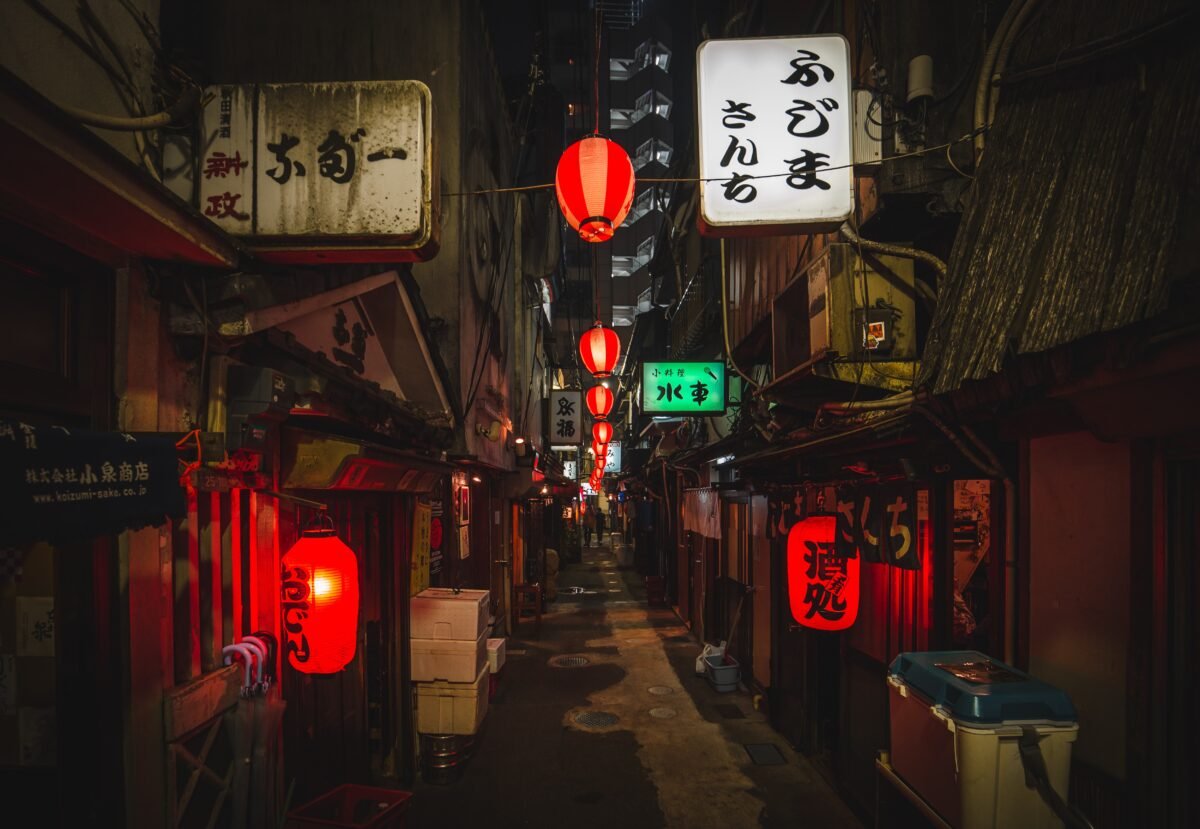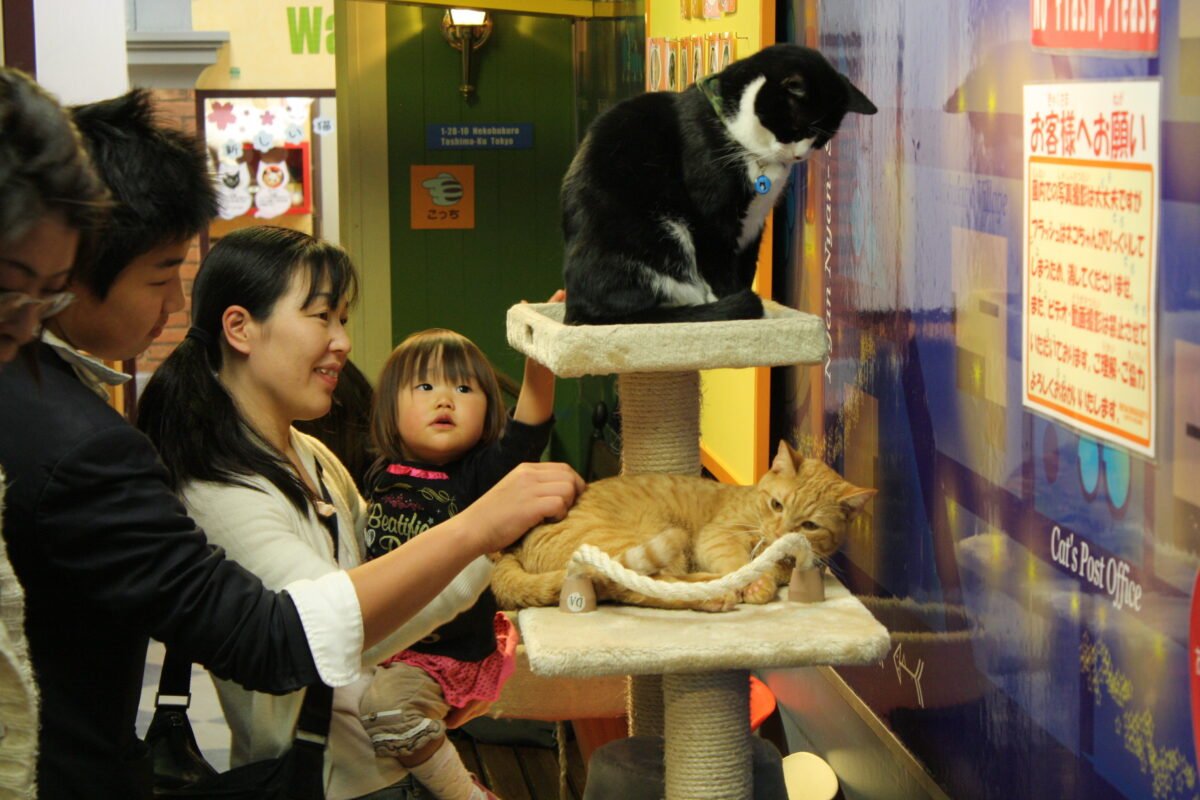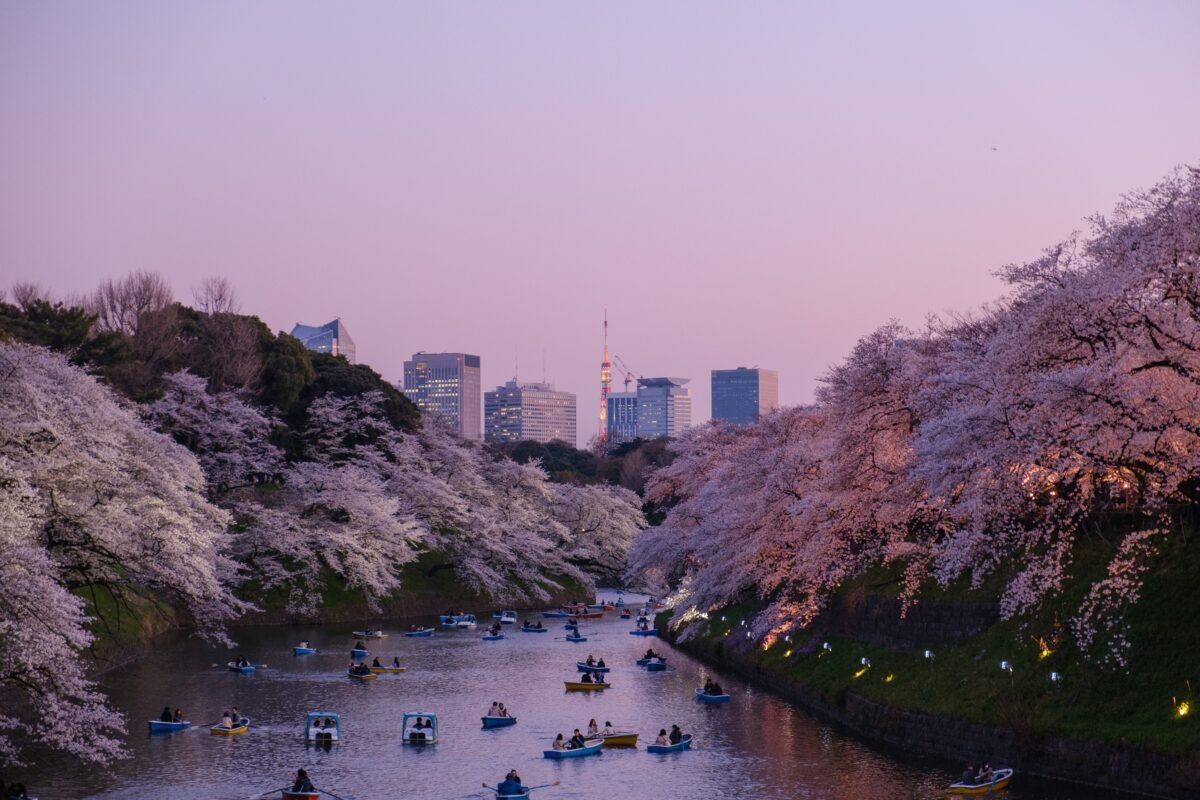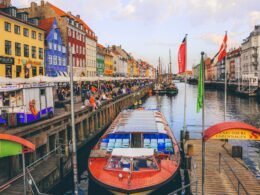Tokyo is arguably one of the world’s most unique and advanced cities in the world – a destination that should be on every traveler’s bucket list. In Japan’s capital city, you can find world-class food, unique culture, and booming cafe culture.
There is always something new to discover in Tokyo, so you will never get bored! Once you arrive, you won’t want to leave, but if you only have 72 hours in the city, here are the best sights to see.
You have arrived in Tokyo! Here are some options on how to get from Haneda Airport to downtown Tokyo:
- By taxi: hail a taxi outside of the airport – Time: 45 minutes – Price: ¥5,600 ($37)
- By Keikyu train: Time: 13 minutes – Price: ¥410 ($2.75)
- By bus: Time: 45 minutes – Price: ¥930 ($6.30)
In terms of navigating around Tokyo, the train is the most reliable and cheap form of public transportation. There are various public transport cards you can purchase at the station or the airport depending on how often you anticipate using the train.
Best places to stay in Tokyo:
$$$ – Aman Tokyo
$ – Nine Hours Otemachi Capsule Hotel
Related: When Is The Best Time To Visit Tokyo?
Day 1: Arrive in Tokyo, Tokyo Skytree, Shibuya Crossing
After settling into your accommodation, don’t waste any time and head over to downtown Tokyo. Walk through and shop in the famous Shibuya Crossing, and climb to the top of Tokyo Skytree to get panoramic views of the city.

Tokyo skytree
You cannot leave Japan without summiting the world’s tallest tower, the Tokyo Skytree. It measures 634 meters in height and is mainly used for television and radio broadcasting. Entrance tickets cost between ¥1,000-3,000 ($6.70-$20), depending on the experience you are looking for. Thankfully, you won’t have to climb any stairs, as the tower is equipped with elevators that seamlessly carry you to the observation decks. Here, you can get incredible panoramic views of all of Tokyo. At the base of the tower, you can also visit an aquarium and shopping complex.
Shibuya Crossing
After seeing Japan from above, head down to the ground to experience it yourself. One must-see in Tokyo is the famous Shibuya Crossing, the busiest pedestrian city crossing in the world. It is estimated that approximately 2.4 million people walk through Shibuya Crossing on a daily basis. It’s a great place to observe the heartbeat of Japan and explore the busiest part of the city.
Make sure to check out the nearby shops, restaurants, and attractions near Shibuya Crossing. One of the most notable must-sees is the Hachiko statue, a statue commemorating a loyal Japanese Akita dog that received global attention and a movie. There is also a commemoration ceremony for the statue every year on March 8th.
Where to eat
Related: Is Tokyo Expensive As A Tourist?
Day 2: Visit Sensō-ji Temple, Harajuku Neighborhood
Explore some of Japan’s Buddhist roots by visiting Sensō-ji Temple, and then take a stroll through one of Japan’s most quirky and iconic neighborhoods, Harajuku.

Sensō-ji Temple
A trip to Japan wouldn’t be complete without a visit to a traditional temple. On your second day in Japan, make a stop at Sensō-ji Temple, which is the oldest Buddhist temple in the city. Many locals come here to worship, so make sure to be respectful of local customs and norms when visiting.
Before finding the pagoda, walk along Nakamise-dori, a busy shopping street full of souvenir shops. Here, you can buy incense to burn at the temple. You can enter the temple, and there is no admission fee. Before entering, you may be required to remove your shoes per Buddhist tradition. Afterward, you can tour the surrounding grounds, which include beautiful gardens and koi ponds.
Harajuku Neighborhood
Harajuku is known as Tokyo’s “kawaii” capital, due to its heavy influence of pop culture, anime, and art. Here, you will find endless cafes, restaurants, shops, and bars to explore. This is a great place to buy odd and unique souvenirs that you can only find in Japan.
Harajuku does not lack in personality and niche experience. Embrace the weirdness by entering some of the fashion, art, and toy stores that line the streets. If you’re hungry, stop by Le Shiner, a famous restaurant that sells only rainbow food. One of their most popular items is their rainbow grilled cheese.
After walking for a while, take a rest in the neighboring Yoyogi Park, which houses the Meji Shrine. Here, you will find that many people place offerings to the shrine, which honors Emperor Meiji and his wife in the 19th and 20th centuries. If you travel during the spring or fall, this is a great place to see the autumn leaves or spring cherry blossoms.
Where to eat
Related: Tokyo Bucket List: 27 Things To Do In The Japanese Capital
Day 3: Watch a sumo wrestling training, visit Memory Lane, and go to Ghibli Museum
It’s your third and last day in Tokyo. Today, witness the art of sumo wrestling at one of the many sumo stables in the city, walk down Memory Lane, or “Piss Alley,” and visit the Ghibli Museum.

Witness sumo wrestling training
Sumo wrestling is a traditional style of Japanese heavyweight wrestling where opponents try to shove one another outside of the ring without touching the ground with anything other than their feet. It is an iconic symbol of Japan and something you can see in real life when visiting Tokyo. The studios where sumo wrestlers train for their matches are called ‘stables.’ For the most in-depth experience and guarantee to see the morning practice, it is best to go with an organized sumo tour.
Walk through Memory Lane
One of the most iconic alleys in Tokyo, Memory Lane is also colloquially known as “Piss Alley.” The name stems from the alley’s original purpose of illegal drinking and a lack of bathroom facilities. Today, the alley is still not the most luxurious spot in Tokyo, but a great place for hole-in-the-wall restaurants and bars. Most notably, the alley is a great spot to take photos, as it still maintains the same gritty and authentic atmosphere it had back in the post-World War II era.
Memory lane is where you can find some of the most authentic and out-of-the-box food in Tokyo. Although it may not be as delicious as you anticipate, it will be a very unique tasting experience. Stalls in the alley offer street food such as frog sashimi, grilled pig intestines, and turtle hotpot. Dishes come in small quantities so you can buy several and have a diverse sampling.
Visit the Ghibli Museum
If you are a fan of anime, you cannot miss the Ghibli Museum located in Mitaka. Here, you can find exhibits related to famous Japanese animated films such as Ponyo, My Neighbor Totoro, Spirited Away, and Princess Mononoke. Photography is not allowed inside the museum, thus adding an extra layer of mystery to the experience. Tickets are difficult to get, as they sell out quickly, so you will need to buy them as much in advance as possible for your trip.
Adult admission to the museum is ¥1,000, which is about $7 USD. After visiting the museum, you can check out Donguri Republic, a retail chain that sells all merch related to Studio Ghibli. There is also Shiro Hige’s Cream Puff Factory, which serves tiny Totoro-shaped cream puffs and a themed cafe lounge.
Where to eat
Extra things you must try while in Tokyo
If you have extra time in your itinerary and want to experience all the weird activities that Tokyo has to offer, check out some of these extra attractions.

- Go to a cat cafe: Cat cafes are abundant in Japan, where you can buy a coffee and enter a ‘cat room’ to play with several cats. Entrance fees vary, but average around $15-20.
- Mario go-karting: One of the most niche activities you can do in Tokyo, this tour operator rents you a mini go-kart and character costume to drive along the streets of Tokyo. Prices range from around $30 an hour.
- Try out some of Tokyo’s weird vending machines: Japan is known as the vending machine capital of the world, with over 5 million machines in Tokyo alone. Buy an item from a vending machine while exploring the city to try it out – some weird vending machine items include umbrellas, bananas, and photographs.
- Take a ninja training class: There are many tour operators in Tokyo who can offer you an official ninja class, where you can learn the official moves, such as throwing the shuriken, or ninja star.
- Visit a Japanese Onsen: Try out one of the hot spring bathhouses in Tokyo. Do your research first, as there are strict rules to adhere to when entering. One thing to keep in mind is that tattooed skin is not allowed in the baths, so you will have to cover up with a waterproof bandage if you are inked.
Useful tips for traveling in Tokyo

The best time to visit Tokyo
The best time to visit Tokyo is either during the spring (March-May) or the fall (September-November). Temperatures in the spring and fall vary between 40-60°F (4-16°C). These are the most scenic seasons in Japan, as spring brings the cherry blossom flowers, and fall brings the changing of the autumn foliage.
Being that the weather is temperate in Tokyo, you can realistically visit year-round. Summer is Japan’s busiest tourist season, which is from June to August. If you are a budget traveler who wants to avoid crowds, consider not visiting during this time of the year. Summer is also the hottest and most humid season in Tokyo.
What is the currency of Tokyo?
The currency used in Tokyo is the Japanese Yen, which is depicted with this sign: ¥. As of 2022, $1 USD equals about ¥150 Yen. Money can be exchanged in the airport or currency exchanges in Tokyo when arriving.
Can you drink tap water in Tokyo?
Yes, all tap water in Tokyo is potable and safe to drink.
The language of Tokyo
The national language of Japan is Japanese, which is widely spoken in Tokyo. Although Tokyo is a large capital city, English proficiency in the city is very low.
Is Tokyo safe?
Yes! Tokyo is actually the fifth safest city in the world, according to the Safe City Index in 2021. Most visitors will be surprised to find that Tokyo is extremely safe to walk around in at night. Regardless of this, it is still a large metropolitan city, so you should always keep a certain level of caution when navigating the city. Pickpocketing and petty theft are very rare in Tokyo, but it is still smart to be cognizant of your belongings and on you at all times.
Related: When Is The Best Time To Visit Japan? The Ultimate Guide
Final thoughts

Tokyo, Japan is one of the most quirky, innovative, and adventurous cities in the world. Make sure to carefully plan your trip to Tokyo before traveling, to make sure you get the most out of the experience as possible. If you only have 72 hours in Tokyo, some of the best highlights to check out are Shibuya Crossing, Ghibli Museum, Memory Lane, and Sensō-ji Temple. Make sure to download a translator when visiting, as English proficiency is low in Japan.














